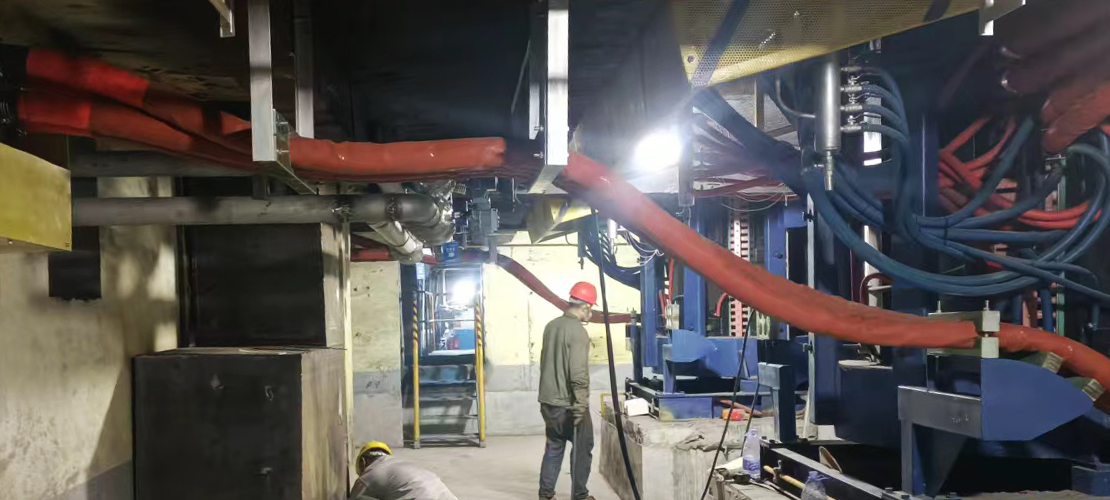Jun. 01, 2025

Induction Furnace Design: An IF is a complex piece of equipment that utilizes electromagnetic induction to melt metal.
The design of an induction melting furnace is centered around key components such as power supply, induction coil, crucible, cooling system, and control mechanism.
These components work in harmony to ensure efficient melting, precise temperature control, and safe operation. The induction furnaces is designed to meet specific industrial needs, such as high melting rates, energy efficiency, and the ability to process various types of metals and alloys. Below, we break down the design elements and their functions in detail.
The power supply is the heart of the induction melting furnace, providing the electrical energy required to generate the electromagnetic field.
It typically operates at medium or high frequency, depending on the application and the type of metal being melted.
The configuration and efficiency of the power supply directly affects the melting rate and energy consumption.
The induction coil is typically made of copper and is responsible for generating an alternating magnetic field, which induces eddy currents in the metal charge.
These eddy currents generate heat, which melts the metal.
The coil is typically water-cooled to prevent overheating and maintain operational stability.
A crucible is a refractory container used to hold the metal charge during the melting process.
It is designed to withstand high temperatures and chemical reactions with the molten metal.
The choice of crucible material (e.g., quartz, graphite, or ceramic) depends on the type of metal to be melted and the required melting efficiency.
The cooling system is usually water-based and is essential to maintain the temperature of the induction coil and other key components.
It prevents overheating, ensures stable performance, and prolongs the life of the furnace.
In vacuum induction melting furnace, a vacuum system is integrated to create a low-pressure environment.
This system is essential for controlling the alloy chemistry and preventing atmospheric contamination.
It includes pumps, valves, and seals to maintain the required vacuum level.
The furnace shell of induction furnaces houses all major components and provides structural integrity.
It may include observation windows, temperature measurement devices, feeding mechanisms, and sampling tools.
A tilting mechanism is usually used to pour the molten metal into the mold.
Electrical control systems manage IF furnace operations, including power regulation, temperature control, and safety protocols.
Advanced systems may include automated features for precise control and monitoring.
Magnetic yokes are magnetic components that protect the induction coils and improve the efficiency of the magnetic field.
They also help reduce electromagnetic interference and improve energy transfer.
By integrating these components, induction furnace design achieve high efficiency, precise control, and versatility in melting a wide range of metals and alloys.
Every induction melting furnace design needs to be considered to ensure the furnace meets industry needs while maintaining safety and reliability.
Latest News
How Does The Electric Arc Furnace Work?
Jun. 02, 2025
What is Induction Furnace Design?
Jun. 01, 2025
Latest Products
Customized metallurgical machinery and equipment range: Electric Arc Furnace, Submerged Arc Furnace, LF Refining Furnace, Vacuum Furnace, Induction Furnace, Dust Remove System, Water Treatment Equipment, etc. Providing the most advanced equipment integration services, metallurgical equipment can be customized according to different needs of customers, and production capacity can be adjusted according to customer requirements.
Electric Arc Furnace
Submerged Arc Furnace
LF Refining Furnace
VD / VOD Vacuum Refining Furnace
Induction Furnace
Furnace Accessories
Navigation
E-mail: anna@srfurnace.com
Tel: +86 159 2955 5868
WhatsApp: +86 159 2955 5868
Add:
Room 102, Building 7A, Free Trade Xintiandi, Fengdong Avenue, Fengdong New Town, Xi'an City, Shaanxi Province
